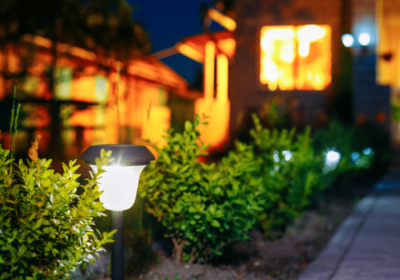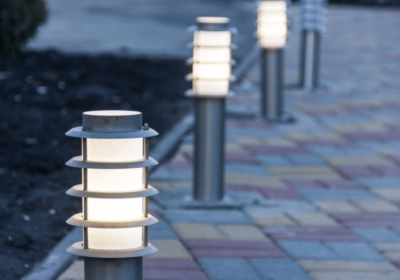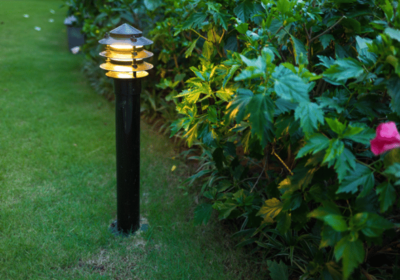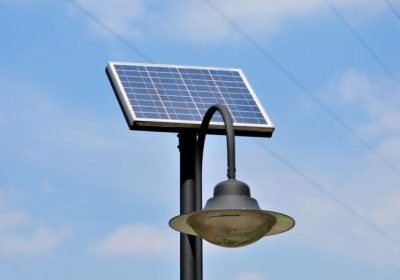An Introduction to Solar Lights
Basically, solar lights are a form of energy-efficient lighting that runs on the power of the sun. These lights are very easy to install and maintain. They do not require wires and are portable, so you can place them wherever you want. You can also choose from a variety of different designs. Choosing a solar light is a great way to improve the look of your outdoor area.
Solar lights are made up of four basic components, which include the solar panel, the battery, the light fixture and the control electronics. The solar panel is designed to absorb the sun’s rays during the day. The solar panel converts the sunlight into electricity, which is then stored in the battery. The light fixture can be in the form of a bulb, LED or even a lantern. The controller is responsible for regulating the charge of the battery, which prevents the battery from overcharging. The controller may also contain a dark-detecting circuit.
A solar light is a great way to lower your electricity bill. This is because they run on solar power and therefore do not require any external wiring. In addition, they are environmentally friendly and will not cause any blackouts. They are also safer than standard incandescent bulbs, because they are not prone to overheating.
Solar lights come in many different designs and colors. Some are designed to illuminate areas such as sidewalks, deck railings, trees, and fences. Others are designed to illuminate a particular area, such as a patio or pool area. They may also include lighted patio umbrellas. They can be either cordless or fixed. The size and design of the light fixture will depend on the lighting requirements.
The best way to choose a solar light is to determine the amount of light that is needed. For instance, if you need a light to illuminate a driveway, then you will need a light that is capable of delivering at least 50 lumens. Using a light that has a higher lumen output means that it will be more efficient, resulting in less energy consumption.
Another consideration is the size of the solar panel. A large solar panel can produce a lot of light, but you may not need that much. On the other hand, a smaller solar panel can be used to light a small area. You will also want to consider the mounting height. Ideally, the solar panel should be placed at an optimal angle for maximum solar-generated electricity.
When looking for solar lights, make sure you buy high quality products. Some of these products may be made of poor quality materials, which may result in a short battery life or poor light output.
What Are the Advantages of Solar Lights?
Using solar lights is not only beneficial to the environment, but it also reduces your energy bill. They are also a flexible investment, so they can be used anywhere in your yard.
Solar lights are easy to install. The best places to install them are outside your home. They are also easy to maintain, as they do not need wires and electric equipment. They are also very affordable. In addition, they can be custom-made, so you can choose the best style for your home.
Some solar lights are even portable, so you can use them on your late-night walks. They are also ideal for decks and fences. These solar lights are soft and do not distract neighbors. You will also save money on your lighting bill because they only need to be on for a couple hours each night.
Solar lights are more efficient than traditional lights. They also use the most advanced renewable energy technologies. They can be dimmed, or they can be set to light up at a particular time.
They are also a great option for those who live in rural areas that do not have electricity.
What Are the Disadvantages of Solar Lights?
Unlike conventional lighting systems, solar lights are not wired. The system consists of an intelligent controller that detects voltage levels at night. It also adjusts the brightness of the light according to the natural brightness of the sky. This reduces the need for manual intervention.
Solar lights are environmentally friendly. They do not produce any harmful emissions and have zero maintenance costs. They also have a longer lifetime. However, there are some disadvantages that come with solar lighting.
One disadvantage is that you can lose your solar panel. In remote areas, theft is a problem. The transportation of materials is also a major expense.
Another disadvantage is that the battery life of the light is affected by the climatic conditions. For instance, it can take longer to charge a light when the sun is overcast.
The battery also needs to be replaced a few times over the lifetime of the light. It’s also important to take into account the cost of replacement. The overall cost of the light fixtures must include the replacement cost.
Another disadvantage is that the lights may not be as bright as you want. If the lights do not produce the level of brightness you want, you may have to upgrade them. This can increase the costs of the lights.
Solar lighting is an effective way to cut your electricity bills. However, it’s important to weigh the advantages and disadvantages before making the decision to switch to solar energy.
How Long Do Solar Lights Last?
Several factors can affect the lifespan of solar lights. One of these is the quality of the solar panels. If the solar panels are not of good quality, they will not generate enough energy during the day to power the lights. The other factor is the quality of the batteries. Better quality batteries will last longer, allowing for more illumination hours per day.
The batteries should be checked regularly. If they are not working, you might need to replace them. If you can replace them before they die, you can get a lot of years out of your solar lights.
In addition to batteries, solar lights have other components that need to be checked. The light sensor casing is one of the most common parts that should be checked. If it is dirty or is corroded, you should replace it.
The lights should also be cleaned. It is recommended to clean them at least once a month. You can do this with a clean cloth. Clean solar panels will help increase the lifespan of the light.
Do Solar Lights Need Direct Sunlight to Charge?
Whether you are planning to install solar lights in your home or backyard, you will have to determine whether or not you will need direct sunlight to charge them. The amount of sunlight required depends on the type and size of your solar light. Regardless of the type, you will need at least eight hours of sunlight to provide a full night charge.
In order to charge your solar lights, you will need to place them in a sunny, shadow-free area. You will also need to reposition them on a regular basis. If you are unable to find a direct sunlight area, you can place your solar lights in the shade.
It is also important to remember that cloudy weather can reduce the brightness of your solar lights. In fact, solar panels are only about 25 percent as effective on an overcast day as they are on a sunny day (source).










